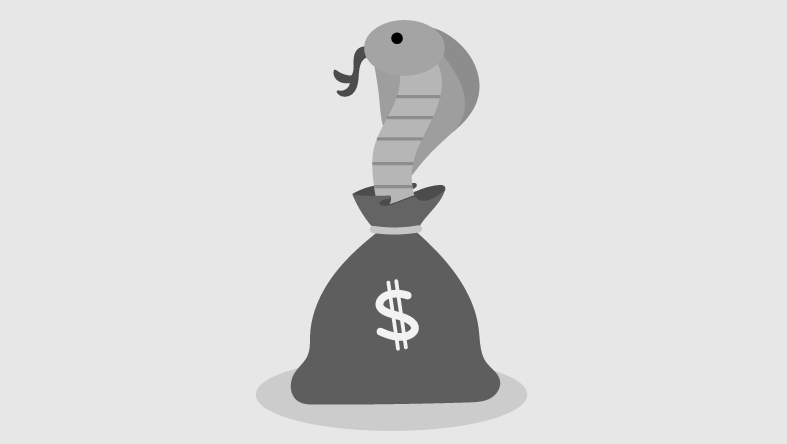Introduction
In the realm of decision-making, the Cobra Effect stands as a cautionary tale—a mental model that reminds us of the perils of unintended consequences. Coined after a historical anecdote from British colonial India, the Cobra Effect refers to a situation in which an attempted solution to a problem only exacerbates it. This concept sheds light on the counterintuitive outcomes that can arise when decision-makers fail to consider the intricate web of incentives, human psychology, and unintended outcomes. In this blog post, we will explore the relevance of the Cobra Effect in decision-making, its prevalence in our lives, and provide practical strategies to identify and avoid falling into its trap.
The Human Psychology and Relevance of the Cobra Effect
The Cobra Effect is deeply anchored in human psychology and is prevalent in various decision-making processes. One of the fundamental drivers behind this phenomenon is the misalignment of incentives. Humans, by nature, respond to incentives, and our decision-making is often driven by the desire to maximize rewards or avoid negative outcomes. However, when incentives are not carefully designed, they can lead to unexpected consequences that undermine the intended goals.
Examples of the Cobra Effect
- Personal Life Decision: Consider the scenario of trying to lose weight. If an individual sets a goal of restricting their calorie intake excessively, they may initially experience weight loss. However, as the body senses a prolonged period of deprivation, it responds by slowing down the metabolism to conserve energy. Consequently, the weight loss progress plateaus or even reverses. The original intention of losing weight becomes counterproductive due to the unintended consequence of a slowed metabolism.
- Business Scenario: In an attempt to increase productivity, a company introduces a performance-based reward system for its employees. The intention is to motivate individuals to work harder and achieve better results. However, if the performance metrics are not carefully chosen or are easily manipulated, employees may shift their focus towards gaming the system rather than improving their actual performance. This leads to a decline in overall productivity and a toxic work environment, contrary to the company’s initial objectives.
- Public Policy-Making: During the British colonial rule in India, the government introduced a policy to reduce the number of venomous cobras. A bounty was placed on each dead cobra brought in. However, people soon realized that it was more lucrative to breed cobras and then kill them to claim the reward. As a result, the cobra population increased instead of decreasing, leading to a failed policy and wasted resources.
Psychological Biases and Underpinnings of the Cobra Effect
The Cobra Effect is closely intertwined with various psychological biases. One such bias is the narrow framing bias, which occurs when decision-makers narrowly focus on the immediate problem at hand without considering the broader context or long-term consequences. This myopic view often blinds decision-makers to the potential unintended consequences that may arise.
Another bias at play is the status quo bias, where individuals have a tendency to favor maintaining the current state of affairs. This bias can lead decision-makers to opt for solutions that appear to address the problem without disrupting the existing system. However, this can result in short-term fixes that fail to consider the long-term consequences or structural changes necessary for sustainable solutions.
Avoiding the Cobra Effect
To avoid succumbing to the Cobra Effect, it is crucial to develop awareness and employ strategies for objective decision-making:
- Systems Thinking: Adopting a systems thinking approach allows decision-makers to consider the interconnectedness of various factors and anticipate potential ripple effects. By analyzing the system as a whole, decision-makers can identify potential unintended consequences and design interventions that align with the desired outcomes.
- Incentive Design: Careful consideration must be given to the design of incentives. Decision-makers should assess the potential side effects of proposed incentives and ensure they align with the desired long-term goals. Open communication channels and feedback loops can help identify any unintended consequences early on.
- Holistic Analysis: Rather than focusing solely on the immediate problem, decision-makers should take a broader view and conduct a thorough analysis of potential consequences. This includes considering both short-term and long-term impacts, as well as the trade-offs involved.
Conclusion
The Cobra Effect serves as a powerful reminder of the complex nature of decision-making and the importance of considering the broader context. By understanding the psychological biases that contribute to the Cobra Effect, individuals can strive for more objective decision-making processes. Through systems thinking, careful incentive design, and holistic analysis, decision-makers can avoid falling into the trap of unintended consequences. Ultimately, fostering awareness and actively avoiding the Cobra Effect can lead to more effective problem-solving and decision-making, benefiting individuals, organizations, and societies at large.
